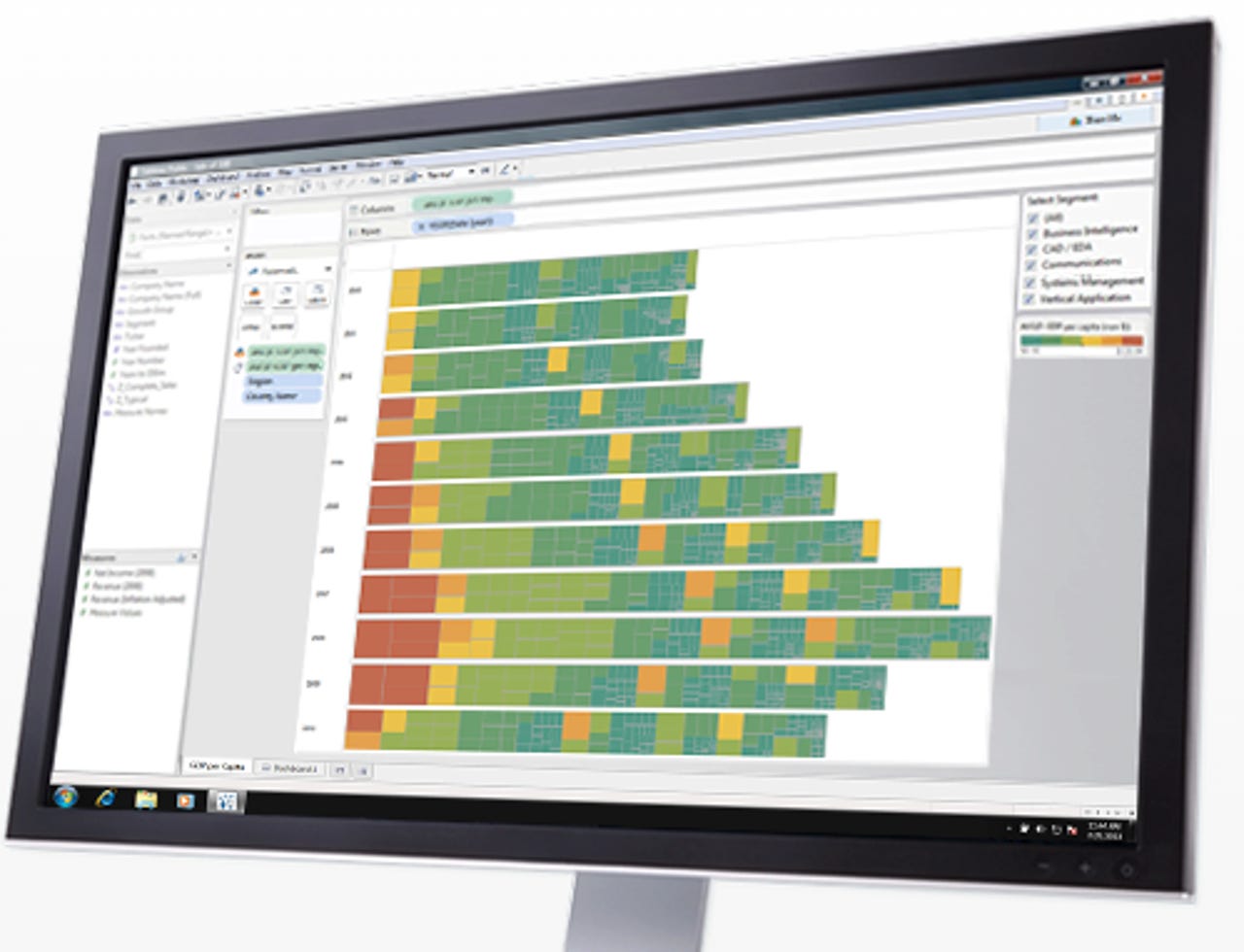Latest version of Tableau includes its first 'smart' features


Tableau on Thursday announced the latest version of its visual analytics platform is coming soon, with its first-ever machine learning-driven features.
Version 10.3 of Tableau includes automated table and join recommendations, powered by machine learning algorithms. The feature helps users pull the right data they need to get the insights they're looking for.
Featured
"It is organically enabling people saying, 'I want to look at lead flow, or employee growth, or any data question I have, but I don't know about the existing model or schema,'" Tableau product manager Dustin Smith explained to ZDNet.
Typically, IT teams find themselves playing "data police" as other employees try to connect tables, Smith continued. But with Tableau's new smart features, employees can simply "start dragging things out and automatically start leveraging machine learning algorithms" to find the tables they're looking for.
The smart features will be of greater benefit to larger firms with more data to sort through. Still, Smith stressed that Tableau 10.3 is designed to serve customers of all sizes.
"We are serving some of the largest Fortune 100 companies in the world," he said. "We are also still fully committed to serving the one or two-person analytics team that's overworked or under resourced."
Version 10.3 includes data-driven email alerts, a feature that companies of all sizes can benefit from. It sends customers a notification when their data crosses a pre-set threshold.
The new version also includes new connectors to Amazon Athena, ServiceNow, MongoDB, Dropbox, and Microsoft OneDrive. It also includes a new PDF connector, enabling customers to directly import PDF tables. Smith called it "a massive time saver," particularly for small organizations that may have one person "who spends way too much time cutting and pasting from PDFs."
Meanwhile, the new version offers Tableau Bridge for Tableau Online customers with hybrid environments. Available in beta, it allows those customers to connect directly with data stored on premise. In other words, they will no longer have to move data to perform a live query from Tableau Online.
"No matter where that data lives, how you want to do analytics... we want a solution that works for you," Smith said.